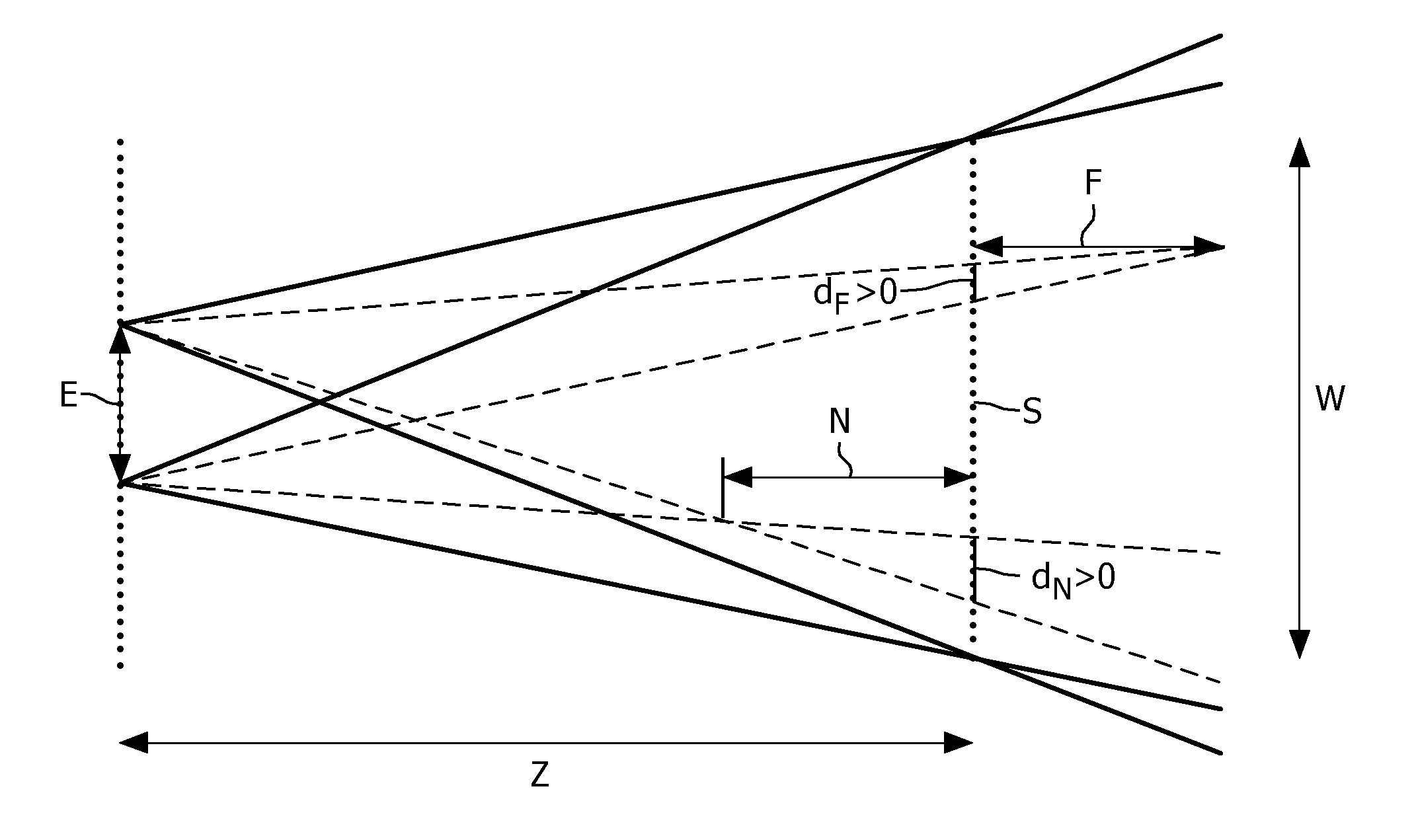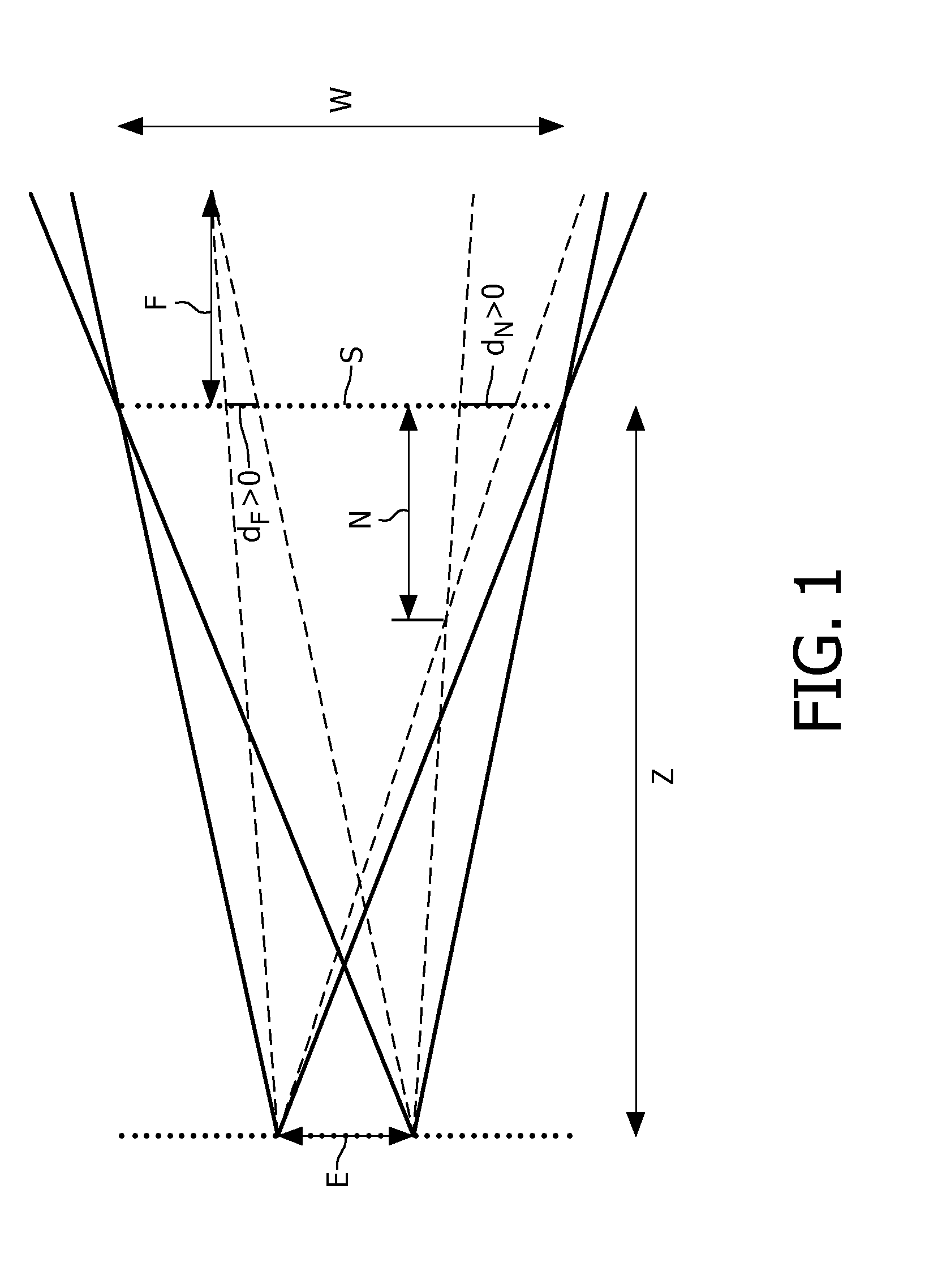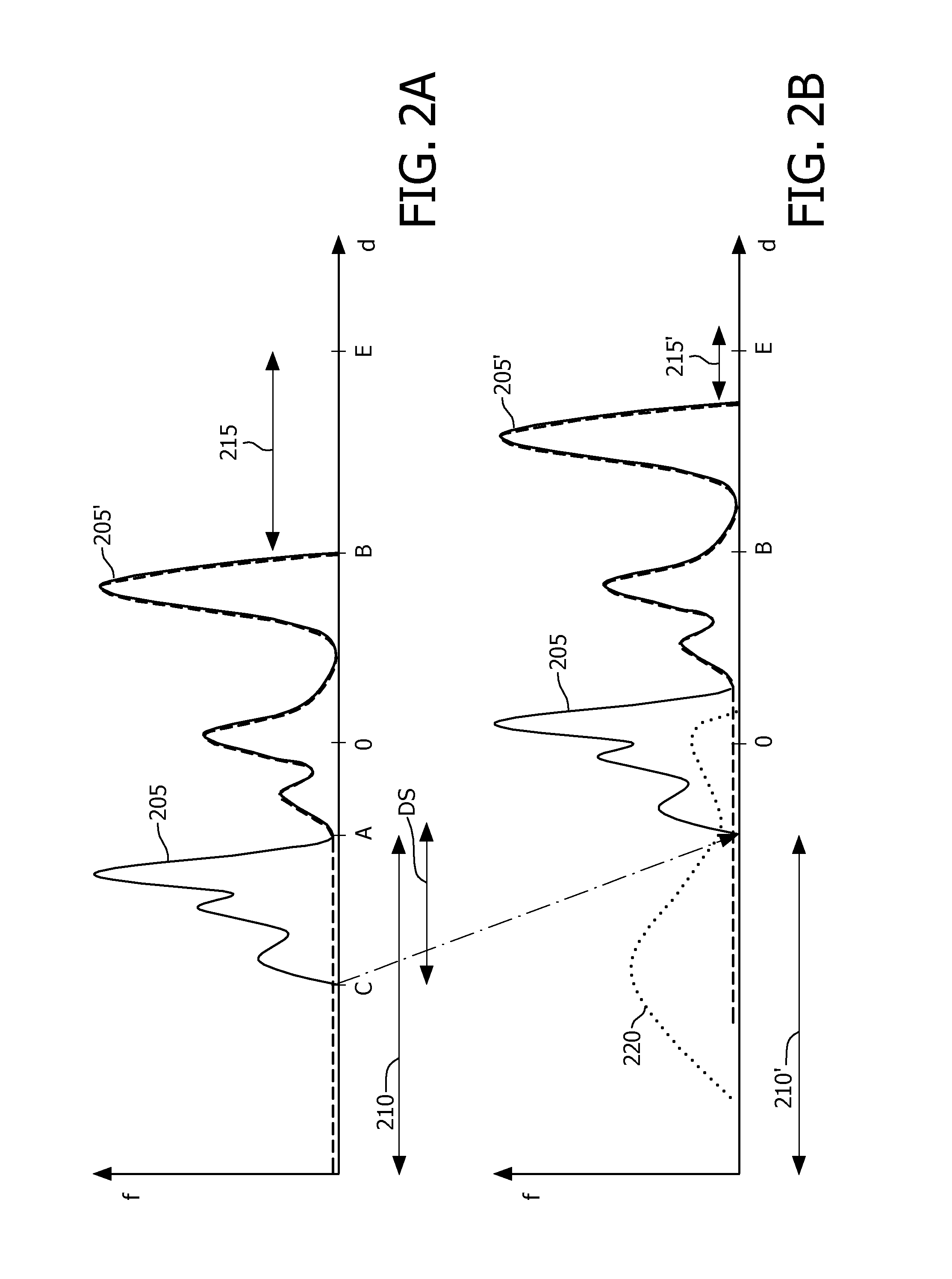Combining 3D video and auxiliary data
- Summary
- Abstract
- Description
- Claims
- Application Information
AI Technical Summary
Benefits of technology
Problems solved by technology
Method used
Image
Examples
Embodiment Construction
[0055]It is noted that the current invention may be used for any type of 3D display that has a depth range. Video data for the 3D displays is assumed to be available as electronic, usually digital, data. The current invention relates to such image data and manipulates the image data in the digital domain.
[0056]There are many different ways in which 3D images may be formatted and transferred, called a 3D video format. Some formats are based on using a 2D channel to also carry the stereo information. For example the left and right view can be interlaced or can be placed side by side and above and under. These methods sacrifice resolution to carry the stereo information. Another option is to sacrifice color, this approach is called anaglyphic stereo. Anaglyphic stereo uses spectral multiplexing which is based on displaying two separate, overlaid images in complementary colors. By using glasses with colored filters each eye only sees the image of the same color as of the filter in front...
PUM
 Login to View More
Login to View More Abstract
Description
Claims
Application Information
 Login to View More
Login to View More - R&D
- Intellectual Property
- Life Sciences
- Materials
- Tech Scout
- Unparalleled Data Quality
- Higher Quality Content
- 60% Fewer Hallucinations
Browse by: Latest US Patents, China's latest patents, Technical Efficacy Thesaurus, Application Domain, Technology Topic, Popular Technical Reports.
© 2025 PatSnap. All rights reserved.Legal|Privacy policy|Modern Slavery Act Transparency Statement|Sitemap|About US| Contact US: help@patsnap.com



